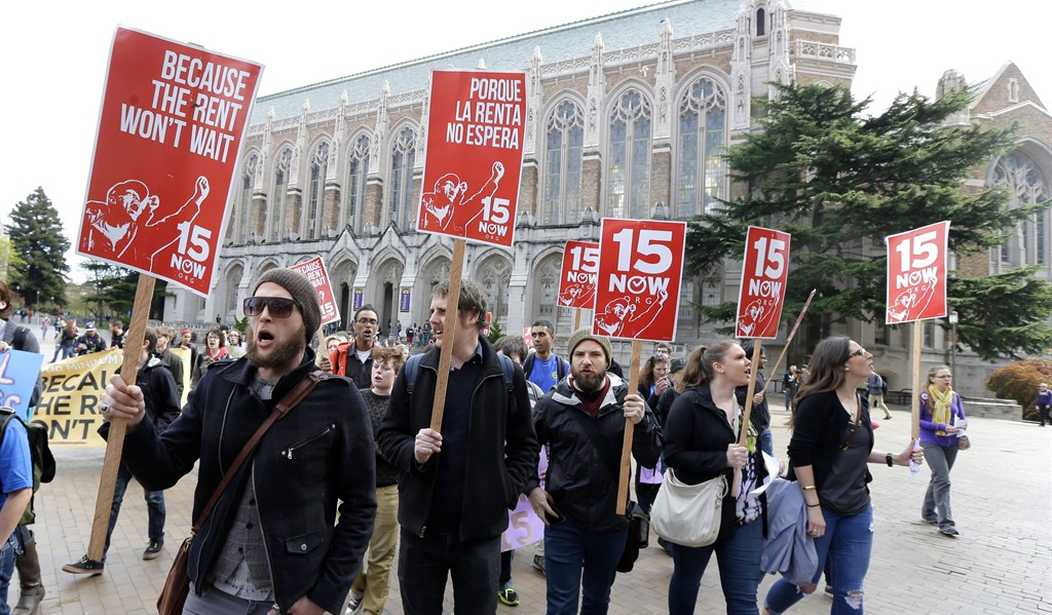There are political movements to push the federal minimum hourly wage to $15. Raising the minimum wage has popular support among Americans. Their reasons include fighting poverty, preventing worker exploitation and providing a living wage. For the most part, the intentions behind the support for raising the minimum wage are decent. But when we evaluate public policy, the effect of the policy is far more important than intentions. So let's examine the effects of increases in minimum wages.
The average wage for a cashier is around $10 an hour, about $21,000 a year. That's no great shakes, but it's an honest job for full- or part-time workers and retirees wanting to earn some extra cash. In anticipation of a $15-an-hour wage becoming federal law, many firms are beginning the automation process to economize on their labor usage.
Panera Bread, a counter-serve cafe chain, anticipates replacing most of its cashiers with kiosks. McDonald's is rolling out self-service kiosks that allow customers to order and pay for their food without ever having to interact with a human. Momentum Machines has developed a meat-flipping robot, which can turn out 360 hamburgers an hour. These and other measures are direct responses to rising labor costs and expectations of higher minimum wages.
Here's my question to supporters of higher minimum wages: How compassionate is it to create legislation that destroys an earning opportunity? Again, making $21,000 a year as a cashier is no great shakes, but it's better than going on welfare, needing unemployment compensation or idleness. Why would anybody work for $21,000 a year if he had a higher-paying alternative? Obviously, the $21,000-a-year job is his best known opportunity. How compassionate is it to call for a government policy that destroys a person's best opportunity? I say it's cruel.
Recommended
San Francisco might give us some evidence for what a $15 minimum wage does. According to the East Bay Times, about 60 restaurants around the Bay Area closed between September and January. A recent study by Michael Luca of Harvard Business School and Dara Lee Luca of Mathematica Policy Research calculated that for every $1 hike in the minimum hourly wage, there is a 14 percent increase in the likelihood that a restaurant rated 3 1/2 stars on Yelp will go out of business. Fresno Bee reporter Jeremy Bagott says that even some of San Francisco's best restaurants fall prey to higher minimum wages. One saw its profit margins fall from 8.5 percent in 2012 to 1.5 percent by 2015 (http://tinyurl.com/y6wy3gne). Most restaurants are thought to require profit margins between 3 and 5 percent to survive.
Some think that it's greed that motivates businessmen to seek substitutes for labor, such as kiosks, as wages rise. But don't blame businessmen; just look in the mirror. Suppose both McDonald's and Burger King are faced with higher labor costs as a result of higher minimum wages. McDonald's lowers its labor costs by installing kiosks and laying off workers, but Burger King decides to not automate but instead keep the same amount of labor. To cover its higher labor costs, Burger King must charge higher prices for its meals, whereas McDonald's gets by while charging lower prices. Which restaurant do you think people will patronize? I'm guessing McDonald's. What customers want is an important part of a company's decision-making.
But there are other actors to whom companies are beholden. They are the companies' investors, who are looking for returns on their investments. If one company responds appropriately to higher labor costs, it will produce a higher investor return than one that does not. That means "buy" signals for the stock of a company that responds properly and "sell" signals for the stock of one that does not, as well as possible outside takeover attempts for the latter.
The best way to help low-wage workers earn higher wages is to make them more productive, and that's not accomplished simply by saying they are more productive by mandating higher wages.





















Join the conversation as a VIP Member